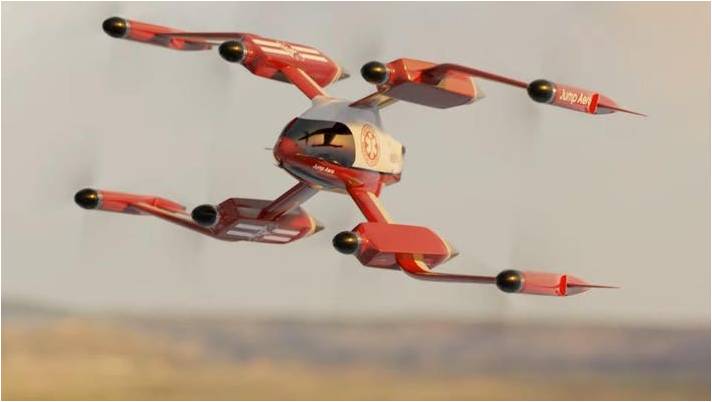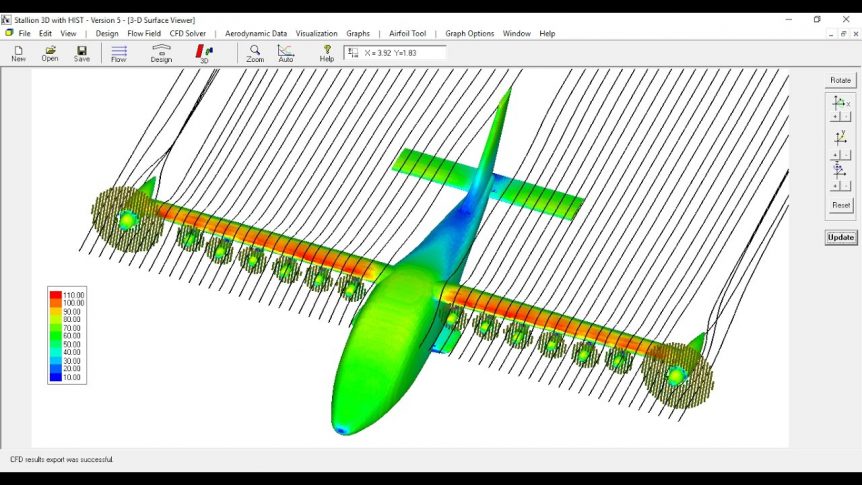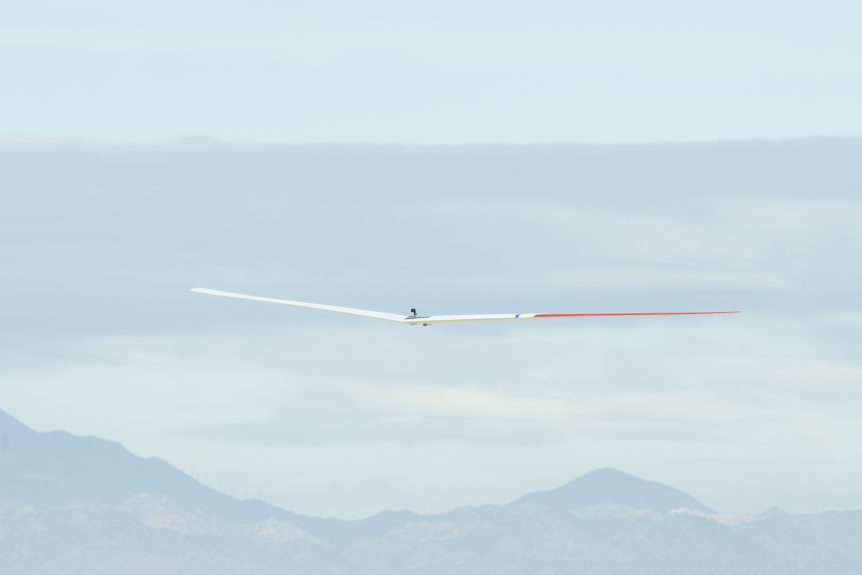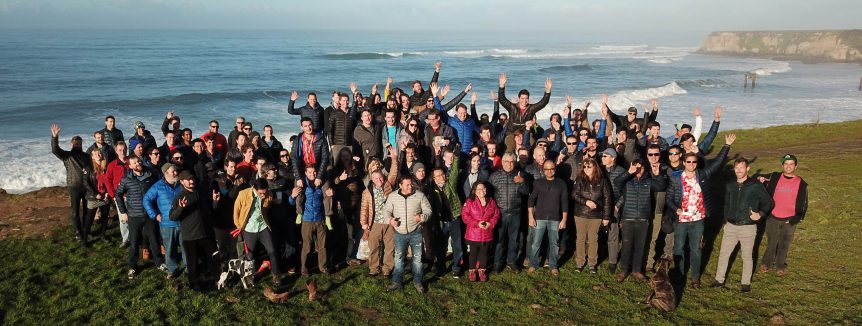Jump to the Rescue The State of Oregon might be ready to Jump into serving remote areas with a startling type of drop-in emergency vehicle. Jump Aero’s Pulse eight-motor biplane configuration could whisk emergency medical technicians on a flight to patients who could otherwise wait for a half-hour or more before help could arrive. Joshua Kupietzky, writing in Simple Flying, cites five characteristics of the craft that merit attention. “Quick arrival times… Serving a special niche… Battery-powered life-saving impact… Vertical takeoff… Easy to use and maintain.” These features describe many eVTOLs (electric Vertical Take Off and Landing) aircraft, but the Pulse allows landing in the space that would otherwise be taken up by an ambulance or small fire vehicle. Carrying a trained professional EMT or firefighter to the scene along with an array of emergency gear, Pulse can have said professional giving medical care or putting out fires within minutes of setting down. Because it’s a tail-sitter, the pilot enters …
Aquifer: Flow Batteries and Rim-driven Motors
In a highly unusual approach, two NASA researchers have combined a flow battery system with a rim-driven propeller drive system. Presenting at the Sustainable Aviation Symposium 2019 at UC Berkeley,Robert McSwain and Jason Lechniak detailed their AQUIFER Project, currently underway in the NASA Armstrong Flight Research Center at Edwards Air Force Base. On Day Two of the Symposium, Jason headed the presentation with a discussion of the implications of this and McSwain’s work on overall energy economy and NASA eVTOL discoveries. Robert followed with a technical description of the Nano Electrofuel (NEF) Aqueous Flow Battery and Rim-driven Motor (RDM). “AQUIFER establishes technical feasibility of an early-stage technology, a high-energy density, aqueous-based, flow battery, resulting in a near-term increase of 1.7 times range over an all-electric battery, while retiring fire and explosion hazards associated with lithium-based chemistries. The… flow battery will be integrated with a rim-driven motor (RDM) as a multi-functional design to eliminate conductive EMI and weight from long cable …
Simulations May Stimulate Better Hybrids
Phillip Ansell, assistant professor in the Department of Aerospace Engineering in the College of Engineering at the University of Illinois explains the benefits and downsides of fossil fuels. “Jet fuel and aviation gasoline are easy to store on an airplane. They are compact and lightweight when compared to the amount of energy they provide. Unfortunately, the actual combustion process is very inefficient. We’re harnessing only a small fraction of that energy but we currently don’t have electrical storage systems that can compete with that.” Ansell and colleagues are striving to use simulations to increase the range of hybrid aircraft. Batteries provide their own set of problems. He explains that adding more batteries to go farther may have a certain logic, for example, but increases weight – a big detriment. “That’s one of the big barriers we run into when designing battery-powered electrified aircraft. The current technology has very significant range disadvantages. But strong fuel-burn advantages.” eVTOL News recently noted that over …
Al Bowers and the Bell-Shaped Curve
Al Bowers has promoted a different kind of lift distribution curve for wings in his talks at the Experimental Soaring Association’s Western workshop, held every Labor Day weekend at Mountain Valley Airport in Tehachapi, California. Most aerodynamics textbooks model the elliptical lift distribution as an ideal to be achieved in wing design. R. J. Mitchell, designer of the classic Spitfire fighter, incorporated an elliptical planform, which serendipitously allowed room for the Browning machine guns in the capacious inboard sections. What could be wrong with that when the finest sailplanes exploit that same theory in their slender spans? Albion Bowers is retiring Chief Scientist at NASA Armstrong Flight Research Center, Edwards Air Force Base. His experiments with an alternative way of spreading the lift across a wing have inspired several large models of how a wing with a bell-shaped lift distribution curve might appear – and perform. Two years ago, he and Erich Chase, a well-known builder of high-end boats, brought …
Venture Capitalists Jump on JoeBen’s Bandwagon
People waste billions of hours sitting on roads worldwide each year. We envision a future where commuting by eVTOL (electric Vertical Takeoff and Landing) is a safer, faster, and cost-competitive alternative to ground transportation. We have spent the last ten years developing the technologies that have made our full-scale technical demonstrator possible and are now ready to build a commercial version of the aircraft. We’re excited to have attracted the backing of leaders in auto manufacturing, data intelligence, and transportation sectors. —Joby Aviation founder and CEO JoeBen Bevirt (Green Car Congress) A Knack for Making and Attracting Money That backing came February 1st in “funding from investors including Intel Capital, Toyota AI Ventures, JetBlue Technology Ventures, and Capricorn Investment Group, a prominent backer of Tesla and Space Exploration Technologies,” according to Bloomberg News. JoeBen Bevirt has been thinking boundless thoughts for most of his life, based on a highly creative output that includes GorillaPod flexible photographic tripods, energy-gathering kites, electric motors, …
NASA Tests Pipistrel Systems To Aid Electric X-plane Program
Taja Boscarol of Pipistrel in Slovenia relays the information that NASA has tested Pipistrel’s electric propulsion system as part of its electric flight research for the X-57 program. It would seem reasonable to start by checking out Pipistrel’s well-tested motor package, one of the few that comes with fully-matched controller, batteries, and ancillary gear. NASA performed its tests on its 13.5-foot Airvolt stand at the Armstrong Flight Research Center at Edwards Air Force Base, California. Heavily instrumented, the Airvolt stand collects data through “high-fidelity sensors,” and transmits the collected information to a data acquisition unit that processes, records, and filters the measurements. NASA and Pipistrel should be able to make good use of this data. Normally installed on the Taurus Electro G2 motorglider, the Roman Susnik designed motor produces 40 kilowatts (53.6 hp.) at low rpm while producing high torque, an ideal combination for rapid climbs to soaring altitude. NASA will collect “torque and thrust measurements, high-fidelity voltage analysis, power …
EAS IX: JoeBen Pulls off a Hat Trick
JoeBen Bevirt, founder and head of Joby Aviation and Joby Motors , is obviously a workaholic, and not only gave a talk at EAS IX, but had an example of his Lotus unpiloted aerial vehicle at the AUVSI (Association for Unmanned Vehicle Systems International) conference in Atlanta, Georgia on the same weekend. Two weeks before that, his demonstration wing for the LEAPTech program was speeding across the desert at NASA’s Armstrong Flight Research Center (AFRC), Edwards Air Force Base in California. JoeBen told Symposium attendees all about his S2 personal aerial commuter and LEAPTech, a joint development with NASA. Part of the LEAPTech program has included building a truck platform for testing the 18-motor wing. This is a fascinating bit of engineering in itself. YouTube does not yet show a test run with the truck and wing, but this news item includes it here. LEAPTech (Leading Edge Asynchronous Propeller Technology) is a NASA Team Seedling Award under the Convergent Aeronautics Project of …
Could This Be the Ford Bi-Motor?
The original Ford Tri-Motor had a body by Ford and three Pratt & Whitney radial engines arrayed across its nose and wings. The Phantom Eye has a body by Boeing, and two 2.3-liter Ford engines fueled by the hydrogen the airplane carries in its bulbous fuselage. It first flew last June, but hit a snag on landing, or at least dug in and twisted a landing skid, rendering it inoperable until this year. Boeing performed software and hardware upgrades, including strengthening the landing gear. Its second flight was a big success with a successful landing – a great one even, since the airplane is reuseable. This is particularly helpful for Boeing, which funded the project out of its own pocket. The company commented on the expectations raised by the flight: “Boeing’s liquid hydrogen-powered Phantom Eye unmanned airborne system completed its second flight Feb. 25, demonstrating capabilities that will allow it to perform intelligence, surveillance and reconnaissance (ISR) missions for up …
Phantom Eye Flies, Breaks a Leg
Boeing’s Phantom Eye, hydrogen-powered HALE (High Altitude Long Endurance) surveillance aircraft rose from its launch cart at 6:22 a.m. Pacific time on June 1, then climbed to an altitude of 4,080 feet on its 28 minute maiden flight. Phantom Eye is meant to be an autonomous craft with four-day mission capabilities. The bulbous front fuselage houses two spherical hydrogen tanks that feed the Ford 2.3 liter engines on the 150-foot, high-aspect ratio wings. The engines, triple turbocharged at altitude, emit only water vapor, making spying a little cleaner. Note the web-like spinning of carbon fiber strands making up the fuselage. This highly-automated manufacturing process probably emulates that used on the company’s 787 Dreamliner and reflects the high-technology methods we can expect in the future. Phantom Eye’s landing was not quite as elegant as its takeoff, one landing gear breaking after digging into the Edwards Air Force base lakebed. Despite the glitch, Boeing remained upbeat about its new bird. “This day …
Flying High on Hydrogen
AeroVironment announced that their Global Observer™ reached an altitude of 5,000 feet (mean sea level) over Edwards Air Force Base and stayed up for four hours – all on its hydrogen-powered electric motors. Having made its first flights last August and September on battery power, the Global Observer on January 11, 2011 successfully demonstrated the system that will allow it to stay airborne for up to a week at a time, staying on station at 65,000 feet. This ability to maintain “persistent” communications and surveillance enables to the Global Observer to be flown in from areas remote from a combat theater or natural disaster location, and to uninterrupted observation of the situation. AeroVironment claims that, “Two Global Observer aircraft, each flying for up to a week at a time, will alternate coverage over any area on the earth, providing a seamless, persistent platform for high value missions such as communications relay, remote sensing, long-term surveillance and border patrol. Offering greater …
- Page 1 of 2
- 1
- 2






